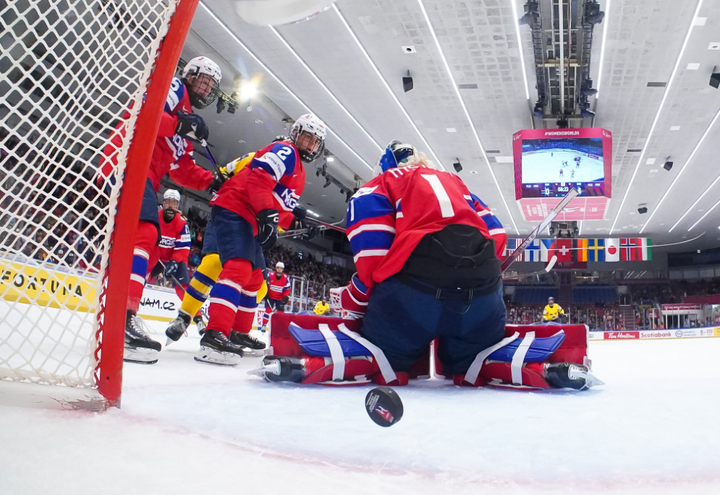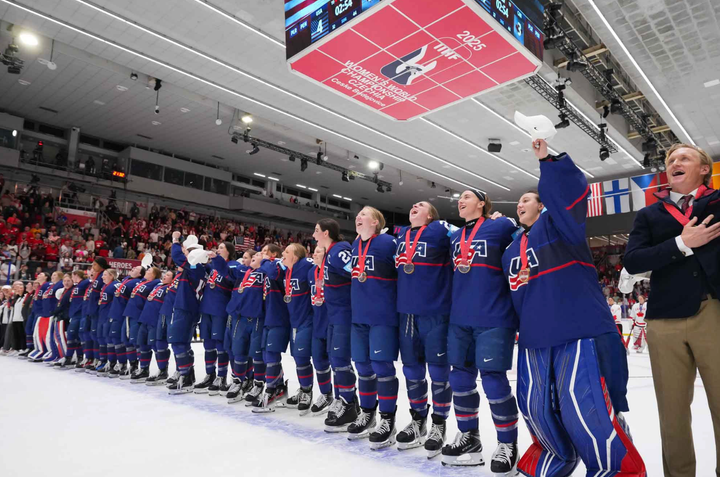Two excerpts from ‘Dare to Make History’
Monique and Jocelyne Lamoureux’s book is out today
Dare to Make History: Chasing a Dream and Fighting for Equity is officially out today, and to celebrate, we’re sharing two of our favorite excerpts. The book, penned by Monique Lamoureux-Morando and Jocelyne Lamoureux-Davidson, tells the firsthand story of their hockey careers and their push for more equity in women’s hockey.
Related
Back in 2017, before the IIHF Women’s World Championship on home soil, the U.S. Women’s National Team made the decision to boycott the tournament until USA Hockey agreed to meet with them and provide them with better compensation and resources for the women’s program. Their boycott was successful, and they inked a brand new contract with the organization before going on to win gold at the tournament.
It sparked a ton of conversation surrounding fair and equitable support for women’s hockey players at the time, but the truth is that players were facing many of these issues within USA Hockey for years. Lamoureux-Morando sheds some more light on that, explaining how the women were initially left out of the commemorative jersey design for the 2014 Olympics:
Around that time, we learned that Nike had redone its design of our new Olympic jerseys to include the year 1998 on the collar as a tribute to the women’s hockey team’s past gold-medal victory. This repaired a major glitch in our road to Sochi. When the original jerseys were debuted to the press a few months earlier, the new jerseys featured the dates 1960 and 1980 stitched onto the back of the neckline as tributes to the two years the men’s team won Olympic gold, leaving those of us on the women’s team to ask, what about our gold medal in 1998?
USA Hockey also had a player from the men’s team at the press event, but no women. Why not someone from our team? For that matter, what about the men’s sled hockey team? They won gold in 2002 and 2010.
We accepted an apology, and the remade jerseys were just fine. The oversight wasn’t intentional or malicious. It was worse. Here we were, eleven former Olympians, twenty-one World Champions, and five Patty Kazmaier Award recipients—probably with more trophies and titles than any women’s hockey team the US had ever assembled—and we weren’t even on the radar of USA Hockey. The women’s team wasn’t even part of the conversation.
It never sat well with the team, and it would resurface in the future as one of myriad examples that were part of a much larger issue.
Later on in the book, the twins describe in their own words the excitement of the 2018 Olympic Winter Games. The two were an integral part of Team USA’s first Olympic gold medal in 20 years, and here, Lamoureux-Davidson describes the game-clinching shootout goal from her unique perspective—as the player who took the shot.
I had paid attention to the way those before me had attempted their shots. Everyone had come down the middle at pretty much the same pace without changing up the angle of their approach. I recalled the importance of alternating styles, speeds, and rhythms to throw off the goalie’s timing and ability to anticipate. I heard the ref blow the whistle, which meant I could go when I was ready. I picked up the puck and went wide to the left and really slow, changing it up from everybody else’s approach. I took an inside edge back out wide to the right before I took my final strides toward the net down the middle. I tried to gauge how far out from the net Szabados was as I came down. I kept my eyes up and the puck in a shooting position in case the goalie’s angle was terribly off and there was a big hole to shoot at, which was very unlikely.
Once I hit the bottom hash mark, I started the sequence that has turned into the most important play of my hockey career. I opened my blade, faked a shot with my weight on my right leg, and let my left leg kick back, getting the goalie to flinch at the movement. I slid the puck to my backhand and transferred all my weight to my left leg, getting Szabados to drop to her knees and lean all the way to her right. Finally, I brought the puck back to my forehand and had a foot and a half to slide the puck into an open net. I could hear Peter yelling down the ice, “Great fake, perfect weight transfer.”
If you want to read more for yourself, you can purchase Dare to Make History from your local bookstore, from Bookshop.org, or any major bookseller.





Comments ()